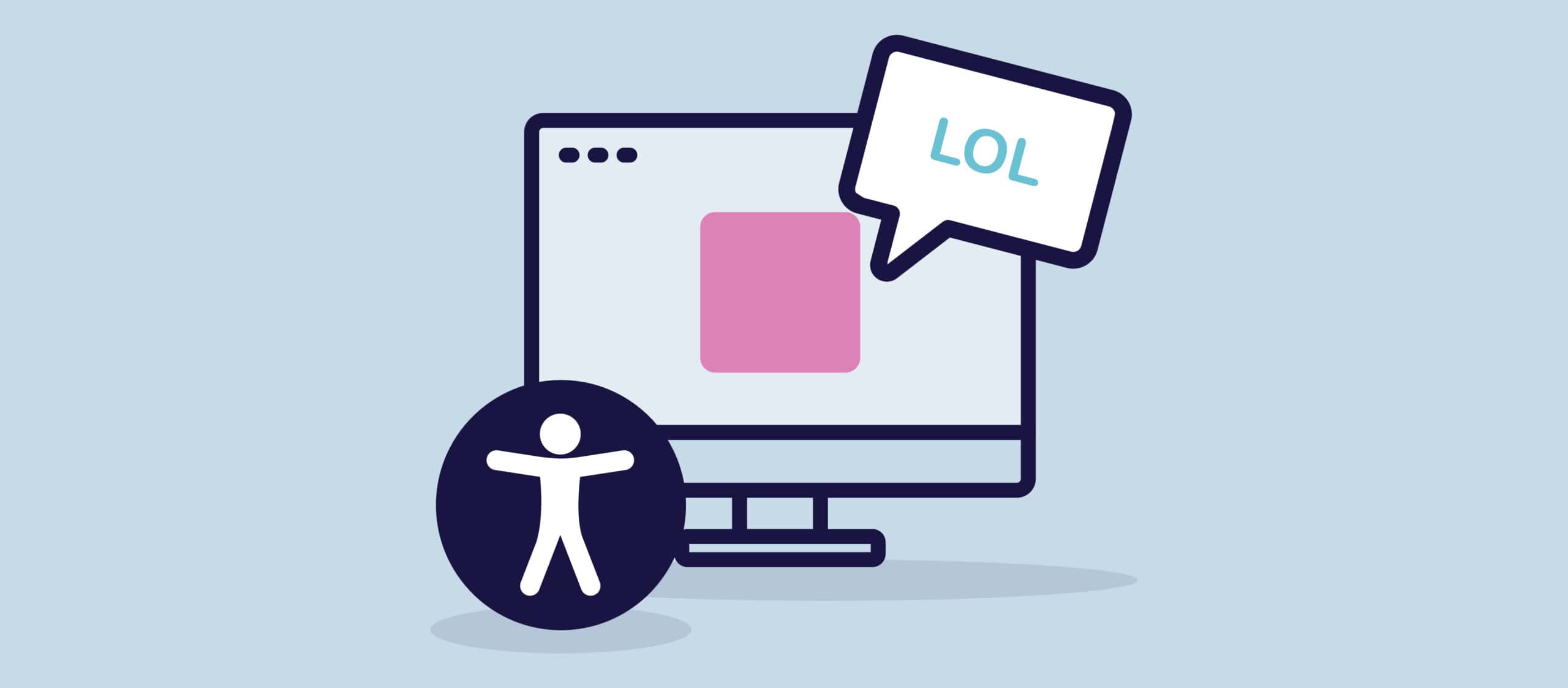Avhengig av hvor du bor, kan det hende at landet eller provinsen du bor i har en tilgjengelighetslovgivning som er basert på tilgjengelighetsstandarder. I denne bloggen skal vi gå nærmere inn på de viktigste digital tilgjengelighet standarder.
Hva er de ulike standardene for universell utforming?
Det finnes flere ulike tilgjengelighetsstandarder som brukes til å veilede utviklingen av tilgjengelig digitalt innhold. Noen av de mest anerkjente standardene for universell utforming er
- Retningslinjer for tilgjengelig webinnhold (WCAG): Dette er et sett med retningslinjer som er utviklet av World Wide Web Consortium (W3C), og som gir et rammeverk for å gjøre nettinnhold tilgjengelig for personer med nedsatt funksjonsevne.
- Paragraf 508: Dette er en føderal lov i USA som pålegger føderale etater å gjøre elektronisk teknologi og informasjonsteknologi tilgjengelig for personer med nedsatt funksjonsevne.
- Americans with Disabilities Act (ADA): Dette er en borgerrettighetslov i USA som forbyr diskriminering av personer med nedsatt funksjonsevne, og som krever at bedrifter og organisasjoner sørger for at deres varer og tjenester er tilgjengelige for alle.
- Accessible Rich Internet Applications (ARIA): Dette er et sett med retningslinjer utviklet av W3C som gir en måte å gjøre dynamisk webinnhold tilgjengelig for personer med nedsatt funksjonsevne.
- PDF/UA: Dette er en teknisk standard som er utviklet av International Organization for Standardization (ISO), og som inneholder retningslinjer for å gjøre PDF-dokumenter tilgjengelige for personer med nedsatt funksjonsevne.
Ved å følge disse standardene og retningslinjene kan bedrifter og organisasjoner sikre at deres digitale innhold er tilgjengelig for alleuavhengig av deres evner. Det er viktig å merke seg at standarder for tilgjengelighet er i stadig utvikling, og bedrifter og organisasjoner bør holde seg oppdatert på de nyeste standardene og retningslinjene for å sikre at det digitale innholdet deres forblir tilgjengelig.

Hva er de fire hovedkategoriene av standarder for webtilgjengelighet?
De fire hovedkategoriene av standarder for universell utforming på nettet omtales ofte som POUR-prinsippene:
- Kan oppfattes: Denne kategorien handler om å gjøre nettinnhold tilgjengelig for alle brukere, inkludert personer med funksjonsnedsettelser. Dette omfatter å tilby alternativ tekst for bilder og videoer, bildetekster for lydinnhold og sørge for at innholdet er lett å lese og forstå.
- Kan betjenes: Denne kategorien handler om å gjøre nettinnholdet brukbart for alle brukere, også funksjonshemmede. Dette omfatter blant annet tastaturtilgjengelighet, slik at brukerne kan navigere på nettstedet ved hjelp av hjelpemiddelteknologiog sikre at innholdet ikke forårsaker kramper eller andre bivirkninger.
- Forståelig nok: Denne kategorien handler om å gjøre nettinnholdet forståelig for alle brukere, også funksjonshemmede. Dette innebærer blant annet å bruke et klart og enkelt språk, unngå sjargong og gi tydelige instruksjoner og tilbakemeldinger.
- Robust: Denne kategorien handler om å gjøre nettinnhold robust og kompatibelt med en rekke brukeragenter, inkludert hjelpemiddelteknologi. Dette innebærer blant annet å bruke standard markeringsspråk og sørge for at innholdet er tilgjengelig selv etter hvert som teknologien utvikler seg.
Er WCAG 2.1 et lovkrav i Storbritannia?
I Storbritannia er det ikke et lovkrav i seg selv å overholde Web Content Accessibility Guidelines (WCAG) 2.1, men det finnes lover og forskrifter som pålegger organisasjoner å sørge for at det digitale innholdet deres er tilgjengelig for personer med nedsatt funksjonsevne.
I Storbritannia krever for eksempel Equality Act 2010 at organisasjoner gjør rimelige tilpasninger for å sikre at tjenestene og informasjonen deres er tilgjengelige for personer med nedsatt funksjonsevne, inkludert digitalt innhold. I henhold til Public Sector Bodies (Websites and Mobile Applications) (No. 2) Accessibility Regulations 2018 må offentlige organisasjoner i Storbritannia også sørge for at nettstedene og mobilapplikasjonene deres oppfyller visse tilgjengelighetsstandarder, blant annet WCAG 2.1 på nivå AA.
I tillegg har mange organisasjoner i privat sektor i Storbritannia tatt i bruk WCAG 2.1 som standard for tilgjengelighet, både for å oppfylle lovkrav og for å fremme inkludering og sikre at deres digitale innhold er tilgjengelig for alle.
Så selv om WCAG 2.1 kanskje ikke er et lovkrav i Storbritannia, anses det som en beste praksis og blir i økende grad en standard for å sikre at digitalt innhold er tilgjengelig for personer med nedsatt funksjonsevne.
Hva er WCAG 2.1-standarder?
Web Content Accessibility Guidelines (WCAG) 2.1 er et sett med retningslinjer som er utviklet av World Wide Web Consortium (W3C), og som gir et rammeverk for å gjøre webinnhold tilgjengelig for personer med nedsatt funksjonsevne. WCAG 2.1 inneholder 13 retningslinjer organisert under fire prinsipper: Perceivable, Operable, Understandable og Robust (POUR).
Retningslinjene er
- Oppfattelig
- Tilby tekstalternativer for innhold som ikke er tekst
- Tilby teksting og andre alternativer for multimedia
- Skape innhold som kan presenteres på ulike måter, inkludert ved hjelp av hjelpemidler, uten at det mister mening
- Gjør det enklere for brukerne å se og høre innholdet, blant annet ved å skille forgrunn fra bakgrunn
- Operable
- Gjør all funksjonalitet tilgjengelig fra et tastatur
- Gi brukerne nok tid til å lese og bruke innholdet
- Ikke bruk innhold som forårsaker kramper
- Hjelp brukerne med å navigere og finne innhold
- Forståelig
- Gjør teksten lesbar og forståelig
- Få innhold til å vises og fungere på forutsigbare måter
- Hjelp brukerne med å unngå og rette opp feil
- Robust
- Maksimerer kompatibiliteten med nåværende og fremtidige brukeragenter, inkludert hjelpeteknologier
Hver retningslinje er ledsaget av spesifikke suksesskriterier som definerer hva som må gjøres for å oppfylle retningslinjen. WCAG 2.1 har tre nivåer av samsvar: A (lavest), AA (middels) og AAA (høyest). Konformitet på nivå AA anses generelt som minimumsnivået som er nødvendig for å oppfylle juridiske og regulatoriske krav.
Ved å følge WCAG 2.1 kan bedrifter og organisasjoner sikre at nettinnholdet deres er tilgjengelig for alle, inkludert personer med nedsatt funksjonsevne, noe som fremmer inkludering og sikrer at ingen blir utestengt fra tilgang til viktig informasjon og tjenester.



